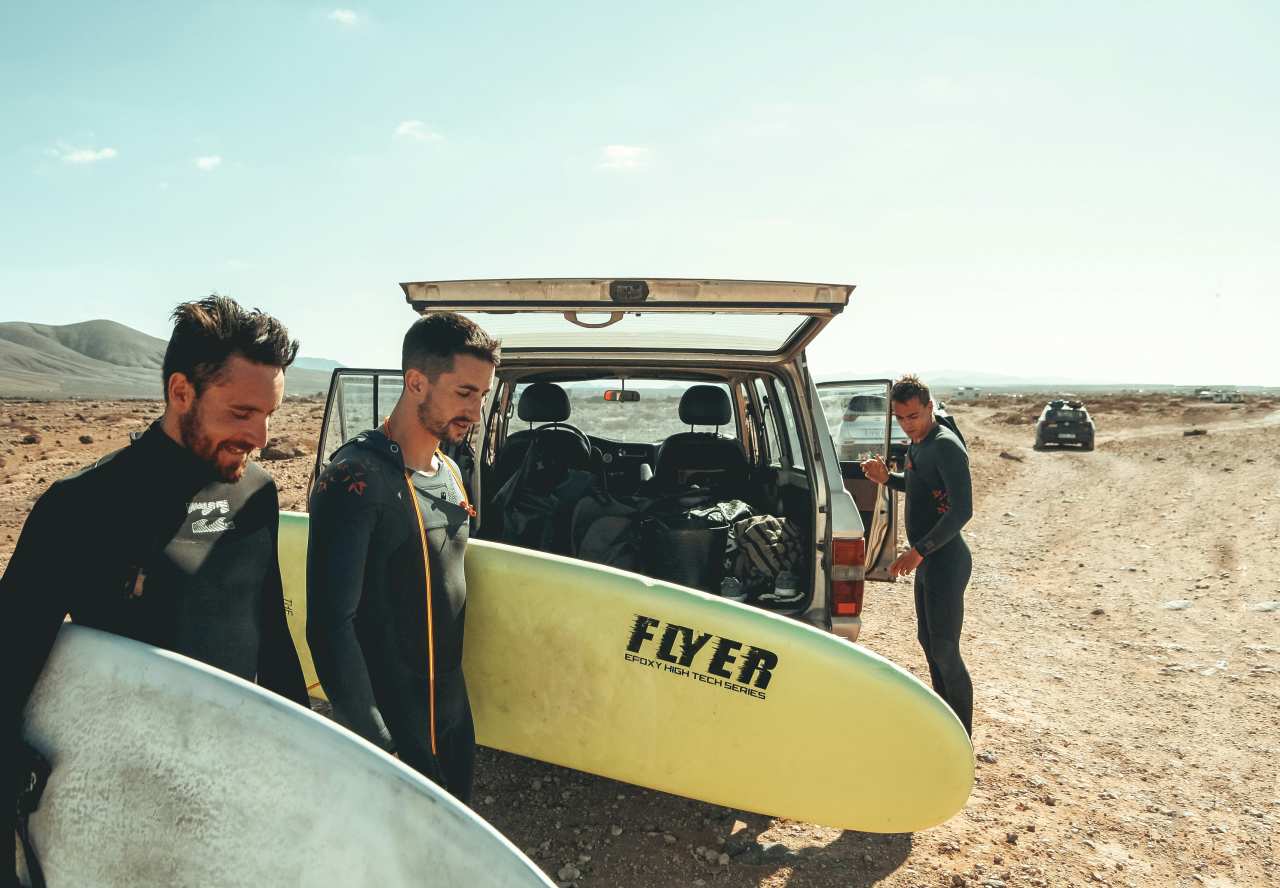Water crossings are like your mother-in-law (stay with me here): they can be fun, lots of fun, but, like your mother-in-law, they must be taken seriously or you're in for a world of pain.
While a creek crossing, pothole or puddle may look shallow and friendly (like your mother-in-law!), don't be fooled; that tiny body of water might just hide a vehicle-swallowing chasm.
.jpg)
Chances are, at some stage on an off-roading trip, you'll be faced with a creek crossing in the bush or on a beach, and that's why it makes perfect sense to know as much as you can about how to tackle the wet stuff – so here are our tips for driving through water.
Note: Before we go any further, let's get this piece of advice out of the way: never drive through flood waters. If you do, you are putting yourself, your loved ones and your vehicle at serious risk.
Before you get wet
Know your vehicle's maximum wading depth*; on city-focused AWD SUVs, it tops out at 500mm on the Subaru XV; on 4WDs it can be anywhere from 500mm (Mitsubishi Triton, Land Rover Defender et al), 800mm (Ford Ranger and Everest) to even a claimed 900mm (Range Rover). (* Max wading depth is the manufacturer's recommendation for how deep the vehicle can go in water which is not flowing and has a solid, flat surface on which to drive.)
Know where your vehicle's engine air intake is and where the lowest, most vulnerable electronics and electrical gear or wiring is – know the location of those and you'll have a better idea of how deep your vehicle can go before you need to be concerned. If your air intake is suddenly forced to suck in water, then it's all over red rover. Your margin for error is somewhat reduced if your vehicle sucks air from below wheel arch level, than if its air intake is bonnet level. In either case, an aftermarket snorkel, which sucks air from roof level, will substantially improve your off-roading game.
If possible, walk any water crossing before you drive it. Never just barrel into a creek or any stretch of water as it may conceal numerous obstacles and hazards. By walking through the water, you'll get a feel for the ground under the water's surface – whether it is solid, pitted, rocky, slippery or littered with tree debris. (Word of warning: walking a creek crossing in Far North Queensland or the Northern Territory may be fraught with danger – toothy, bitey croc danger – so beware and be aware.)
.jpg)
By walking a creek crossing, you'll also get a more accurate indication of the strength of the water flow than you would if you simply looked at it from the comfort of the driver's seat. If the water is too strong to walk through, it's too strong to drive through. As always, err on the side of caution, put your ego in the glovebox and use your commonsense.
Another bonus of walking the crossing is that it will give your vehicle time to cool off. Hot engine components – or diffs – do not respond well when suddenly dipped into cold water.
Make sure your recovery gear is at hand and attach any snatch straps (basically elasticated ropes used to tow a vehicle out of trouble) by bow shackles to your vehicle's recovery points at the front and back. This is a sound pre-emptive strategy and will prevent you from being forced to scramble around for the gear when it's actually needed.
If you can cover the front of your vehicle with a tarp, that's great, or a proper water blind, even better. Anything like this will help prevent water getting into your engine bay where it can cause damage.
Tackle the wet stuff
As with sand-driving, when it comes time to tackle water if you're in an auto, you can just set (to Drive) and forget; if you're in a manual you need to work the gears so you can maintain that sweet-spot steady momentum and don't slow down, change gears or stop during the crossing. Second gear in 4WD Low gives you a bit of freedom to keep the revs up, and maximise speed and torque, but your gear selection may well change depending on conditions. Lock the rear diff if you have the option and the crossing looks especially tricky.
The key to driving through water is to maintain enough speed to create a bow wave in front of your vehicle – a small rolling wave that creates a pocket of air under the bonnet, preventing water from getting into the engine bay and causing strife – but to avoid going so fast that you're ramming the front of the radiator into the water and risking damage. You'll find the sweet spot and it'll be different for different crossings in different vehicles.
.jpg)
Keep up the steady pace and Roberto's your uncle.
When you drive out onto the adjacent creek/river bank, it's sound off-roading etiquette to stop for a few moments, wait for all of the water to drain from your vehicle and only then proceed. If you drive straight out, letting water pour out along the way as you head off up the track, you might turn what was an easy way out of the creek into a greasy and treacherous incline. Your fellow off-roaders will definitely not appreciate that – and karma is a mongrel dog.
The gear you need
There is a mind-boggling variety of vehicle-recovery gear available – ranging in quality and price – for all manner of trips – from weekend bush sojourns to three-month-long remote-area expeditions – but if you stick to the basics for starters and make sure you have good-quality equipment onboard, then you're heading in the right direction.
Get a tyre-pressure gauge, a tyre deflator, vehicle-recovery tracks, an air compressor, a long-handled shovel, rated bow shackles, a snatch strap (for vehicles with rated recovery points) and a water blind.




.jpg)
.jpg)
.jpg)
.jpg)
.jpg)
.jpg)
.jpg)
.jpg)
.jpg)
.jpg)
.jpg)
.jpg)


.jpg)
.jpg)

Comments